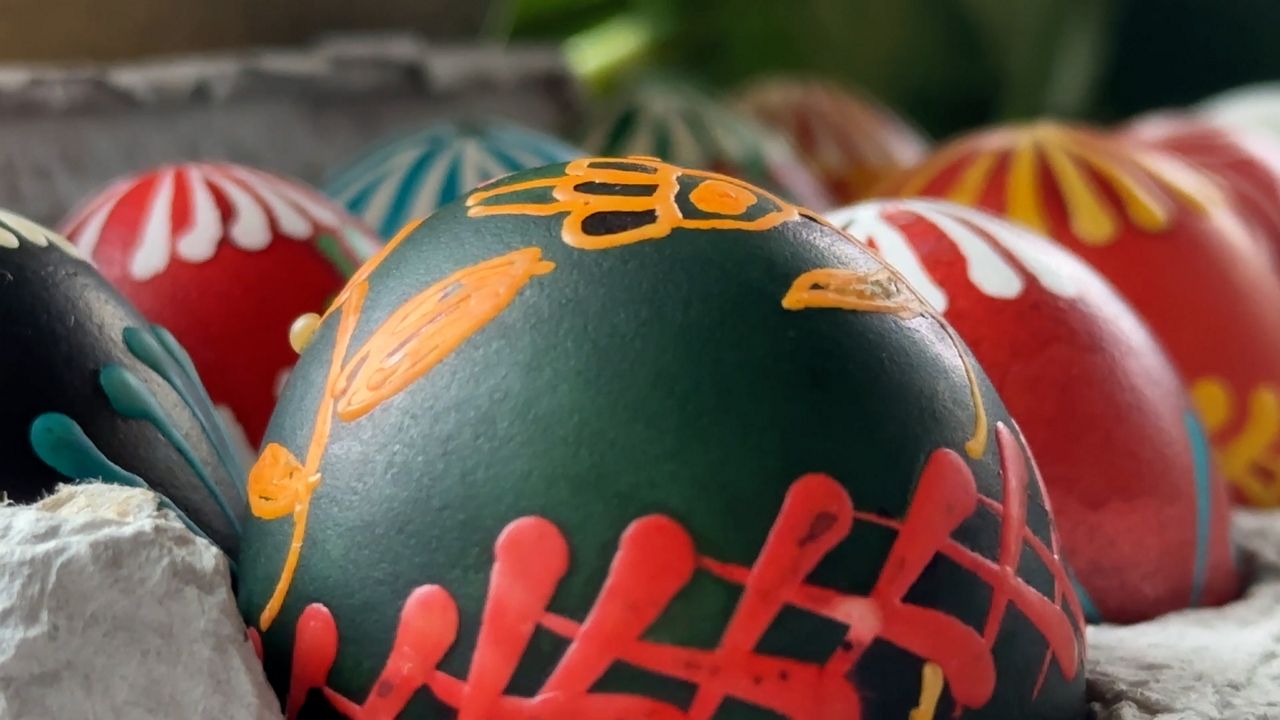MADISON, Wis. — A local artist is teaching Eastern European egg decorating traditions to keep the custom alive.
Jarka Sobiskova is a longtime Madison artist. She’s spent a lot of time this March in her porch studio, which is covered in greenery, decorating and dyeing eggs.
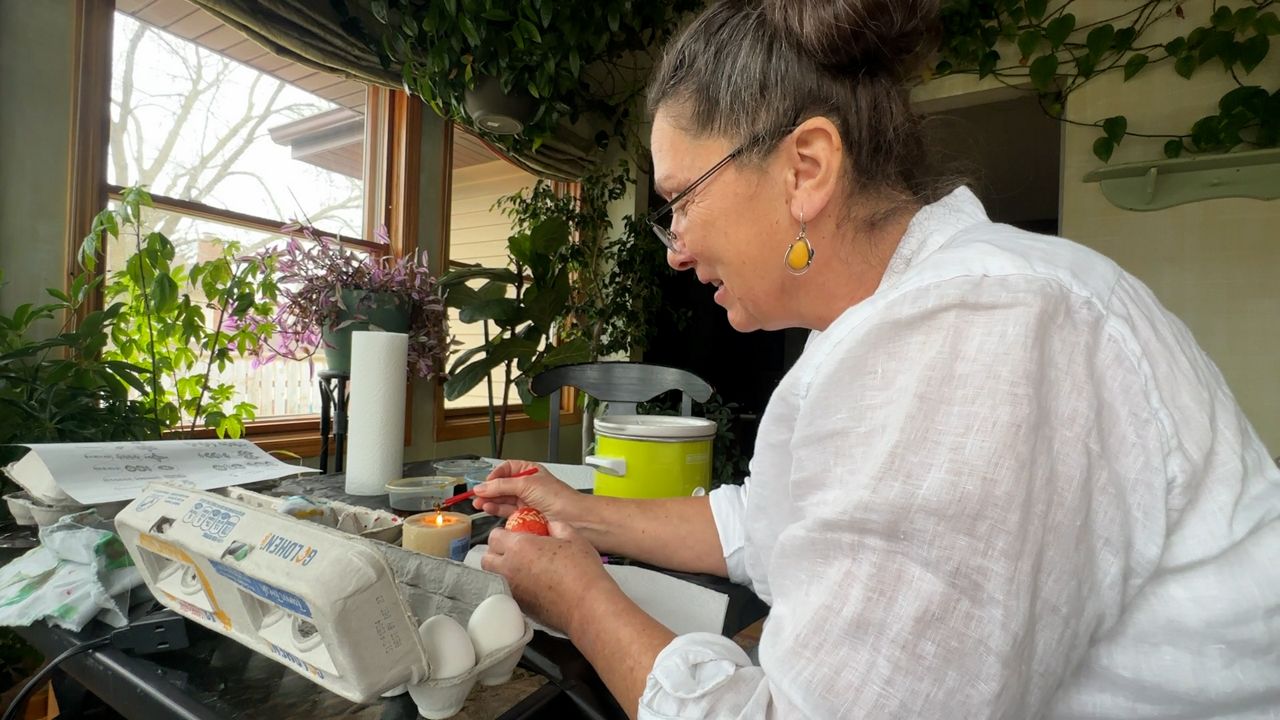
“I learned how to do this since I was very little,” Sobiskova said.
She grew up in what used to be Czechoslovakia. Decorating eggs this way was a big part of her childhood.
“I loved it,” she said. “I couldn’t wait to decorate the eggs. It was one of my favorite things.”
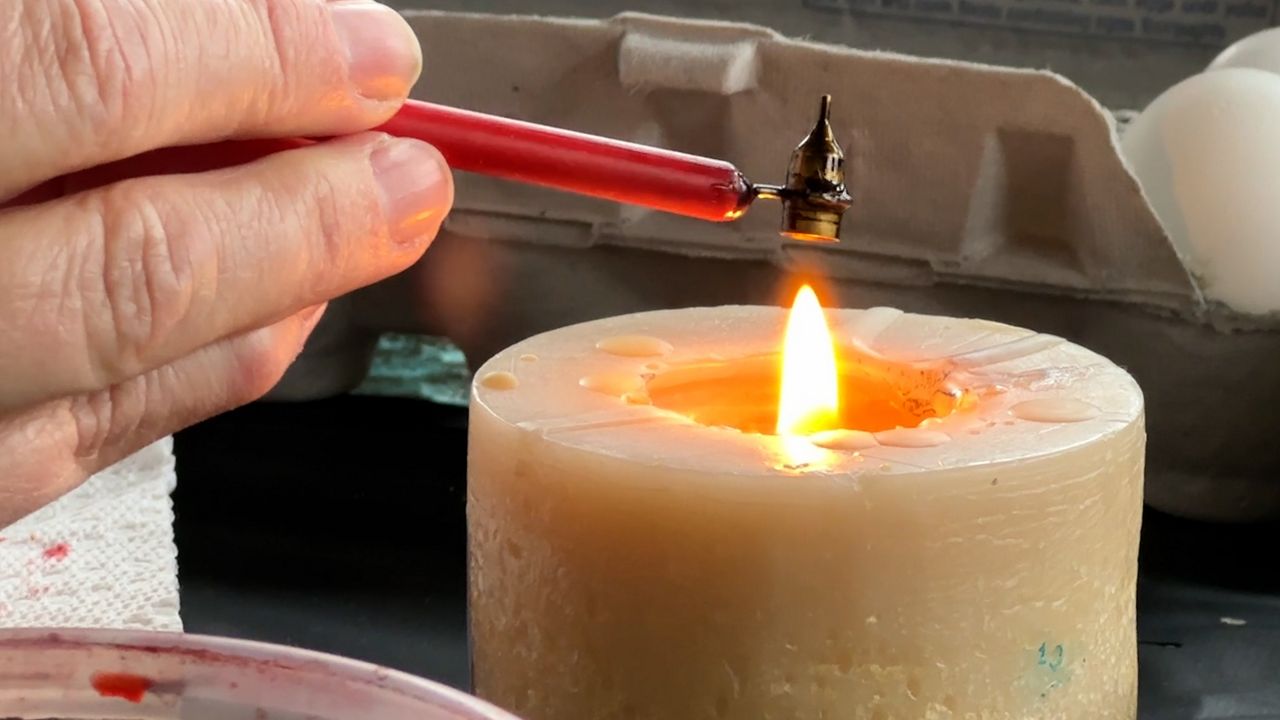
In Russian and Ukrainian languages, the decorated eggs are called pysanky. This method of egg decorating uses hot wax; beeswax is her favorite. Traditionally, the wax comes directly from a lit candle.
Decorating eggs is one of the world’s oldest art forms. The Library of Congress said humans have been doing it for at least 50,000 years. All over the globe, different cultures use different methods, do different designs and they mean different things.
Generally, decorated eggs tend to represent rebirth and springtime.
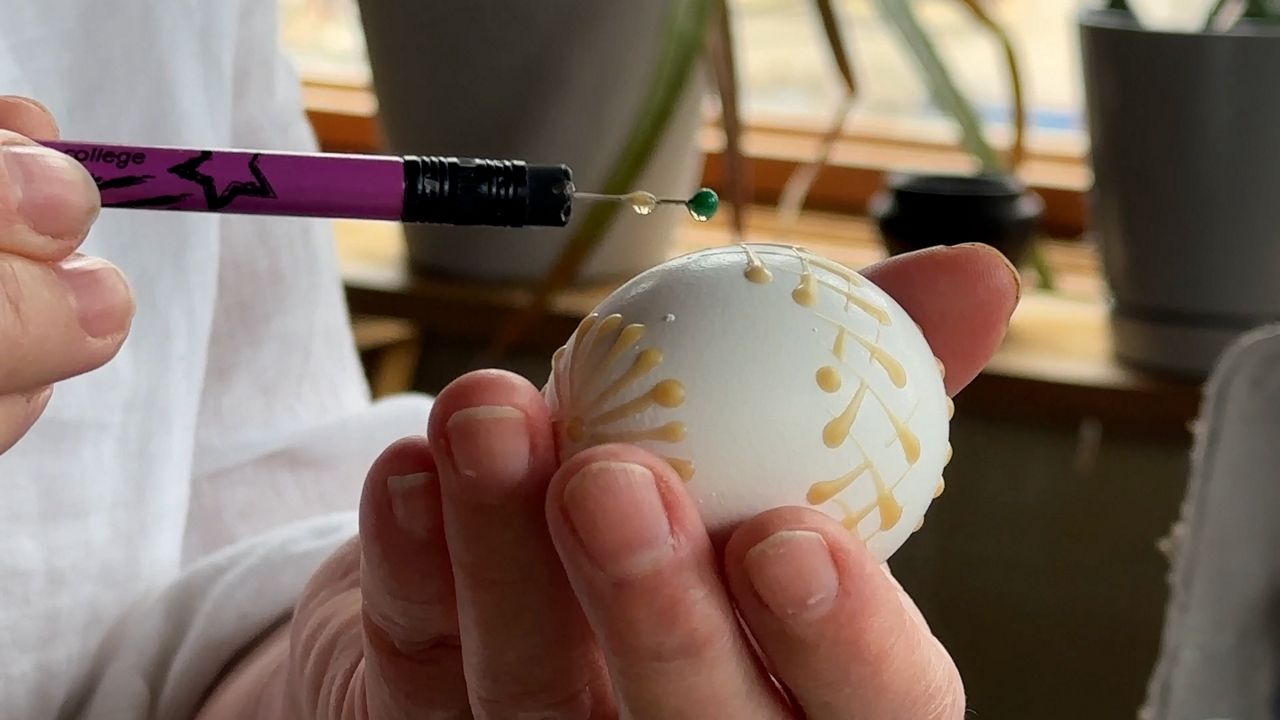
“Every region actually has a different coloring tradition,” Sobiskova said. “They use certain kinds of ornamentation or patterns which are traditional for that region.”
Growing up for her, they were usually made by girls and women.
“They write messages for people, men who they will give the egg to,” she said. “It is well wishes, or good harvest, or prosperity, or if you love somebody you can put a secret message.”
When they’re dyed this way, they can last for a long time.
“Lots of people have their great-grandmother’s eggs,” Sobiskova said. “Fifty, 60 years they’ve been keeping these eggs.”
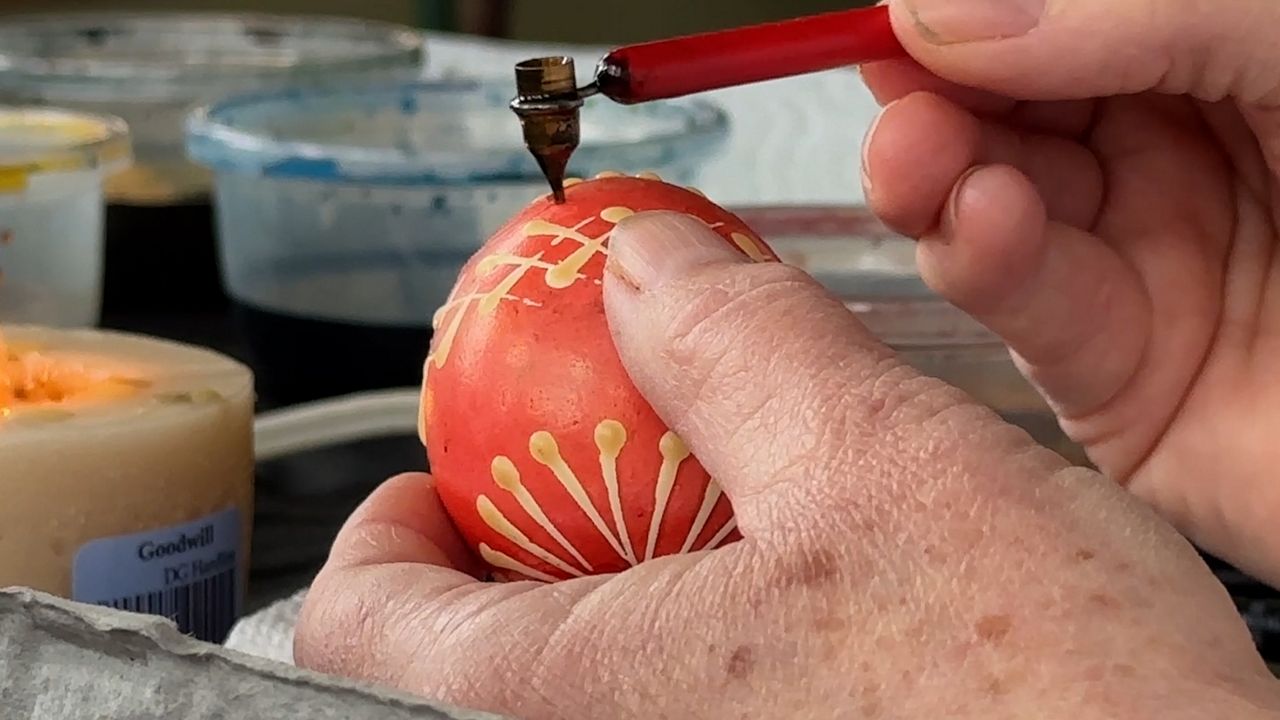
Dyeing eggs this way takes a lot of practice. That’s especially true when open flame, hot wax and a tiny surface area are involved.
“It’s kind of meditative. It’s a little similar to sewing in some ways,” she said. “You have to focus and slow your breathing down. You need to have a steady hand for it.”
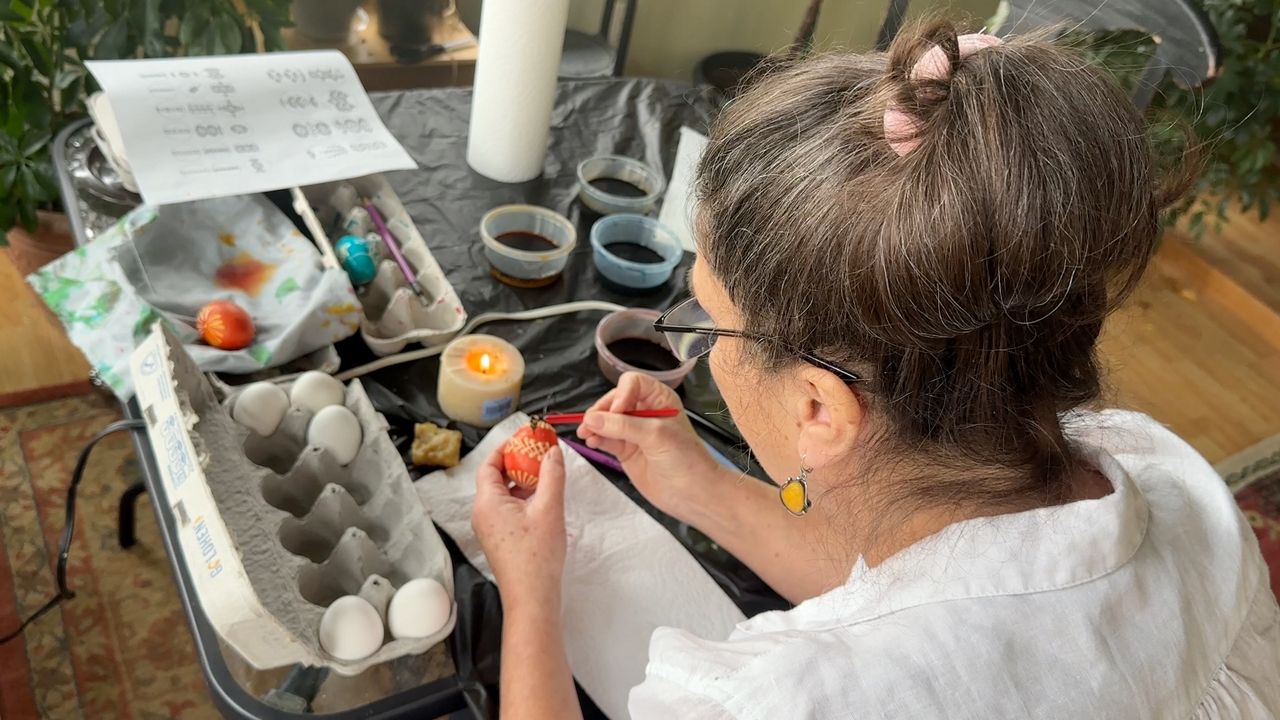
She teaches classes before Easter so people can learn how to make pysanky themselves.
“It brings a joy, this spring celebration. My name means 'spring celebration,”' she laughed. “It makes me happy to see people enjoy it.”
Sobiskova is teaching classes in the week before Easter. One is Saturday at the Art Lit Lab, the other is the Wednesday before Easter at Four Winds Farm.
